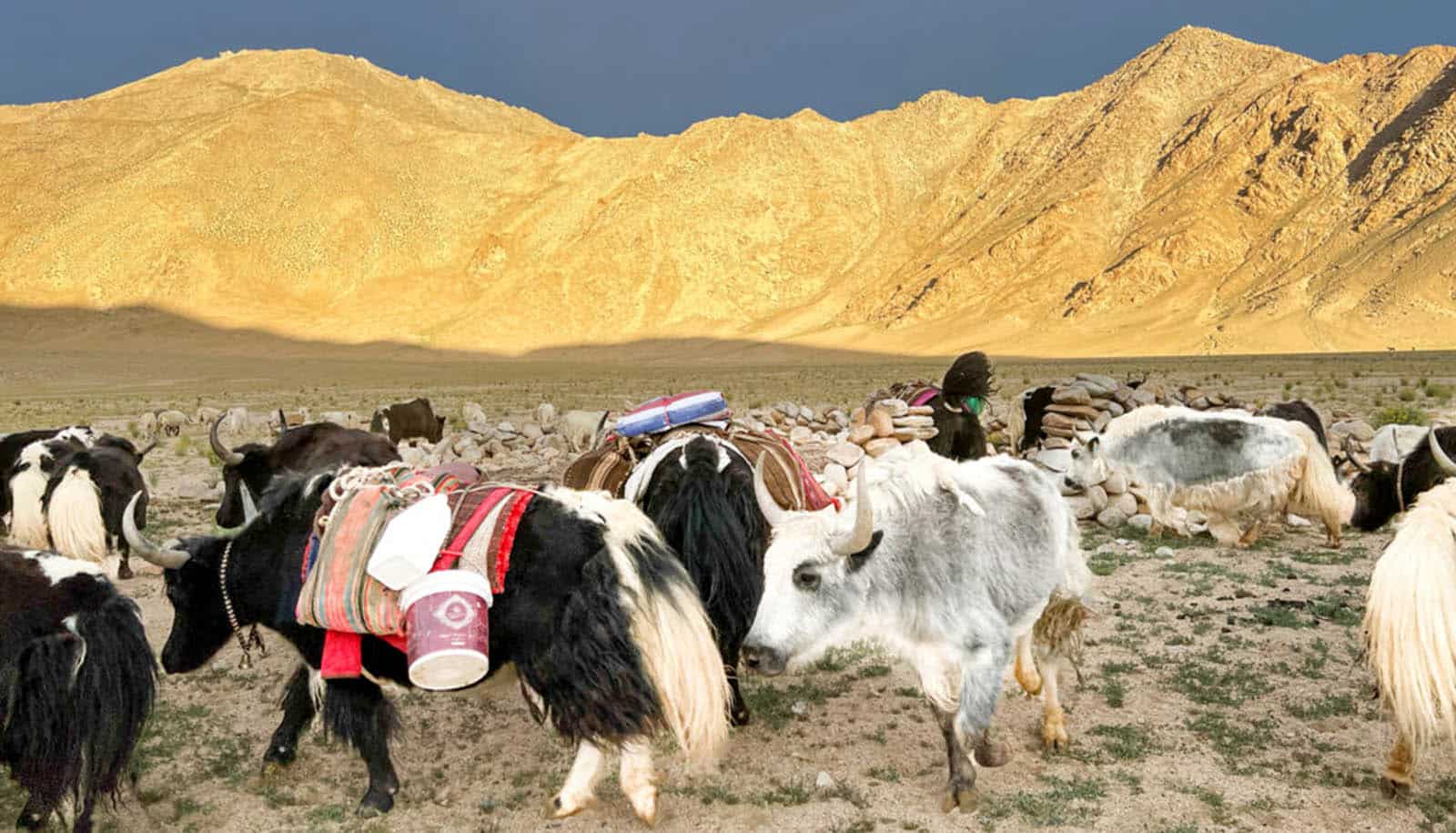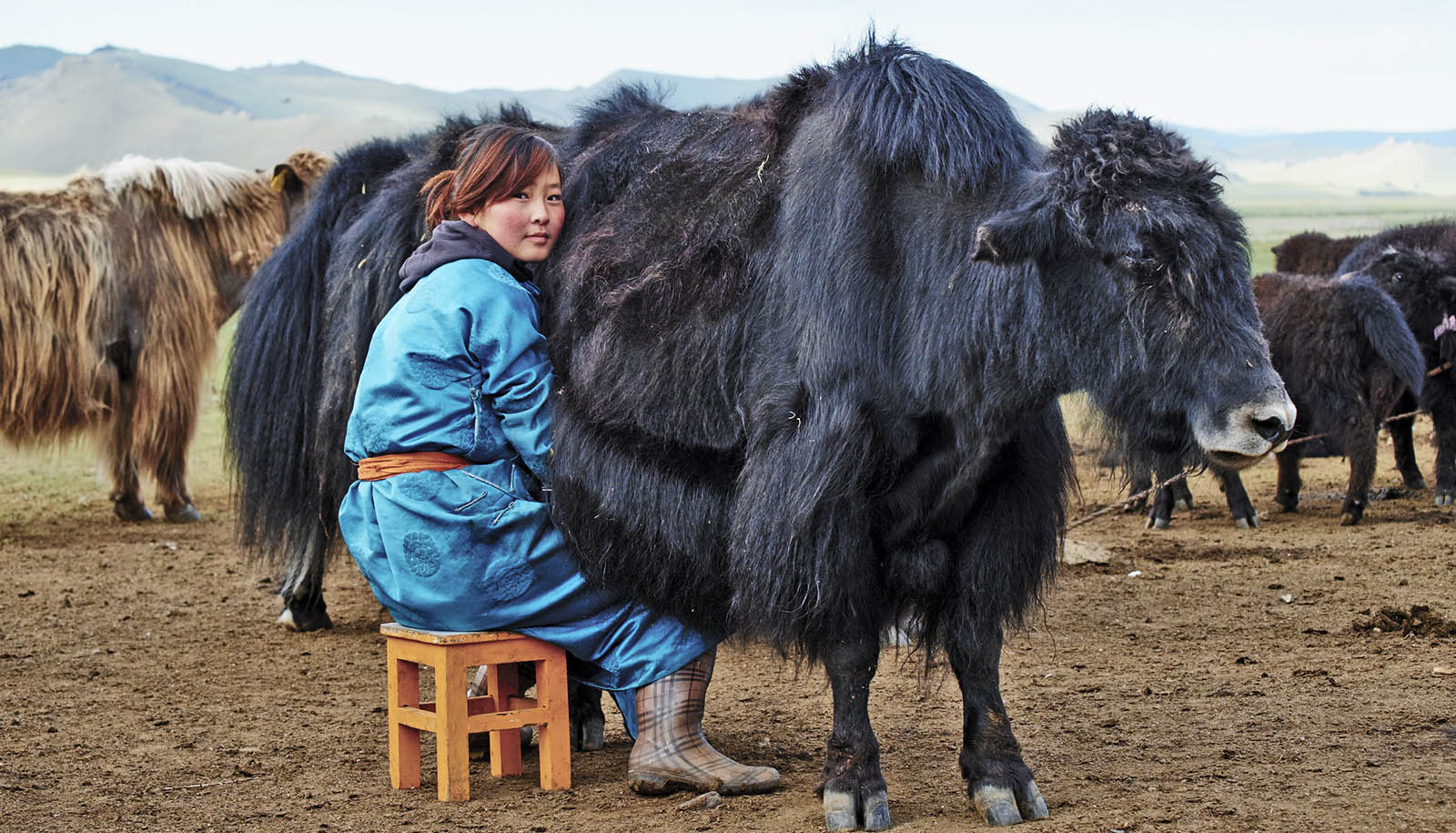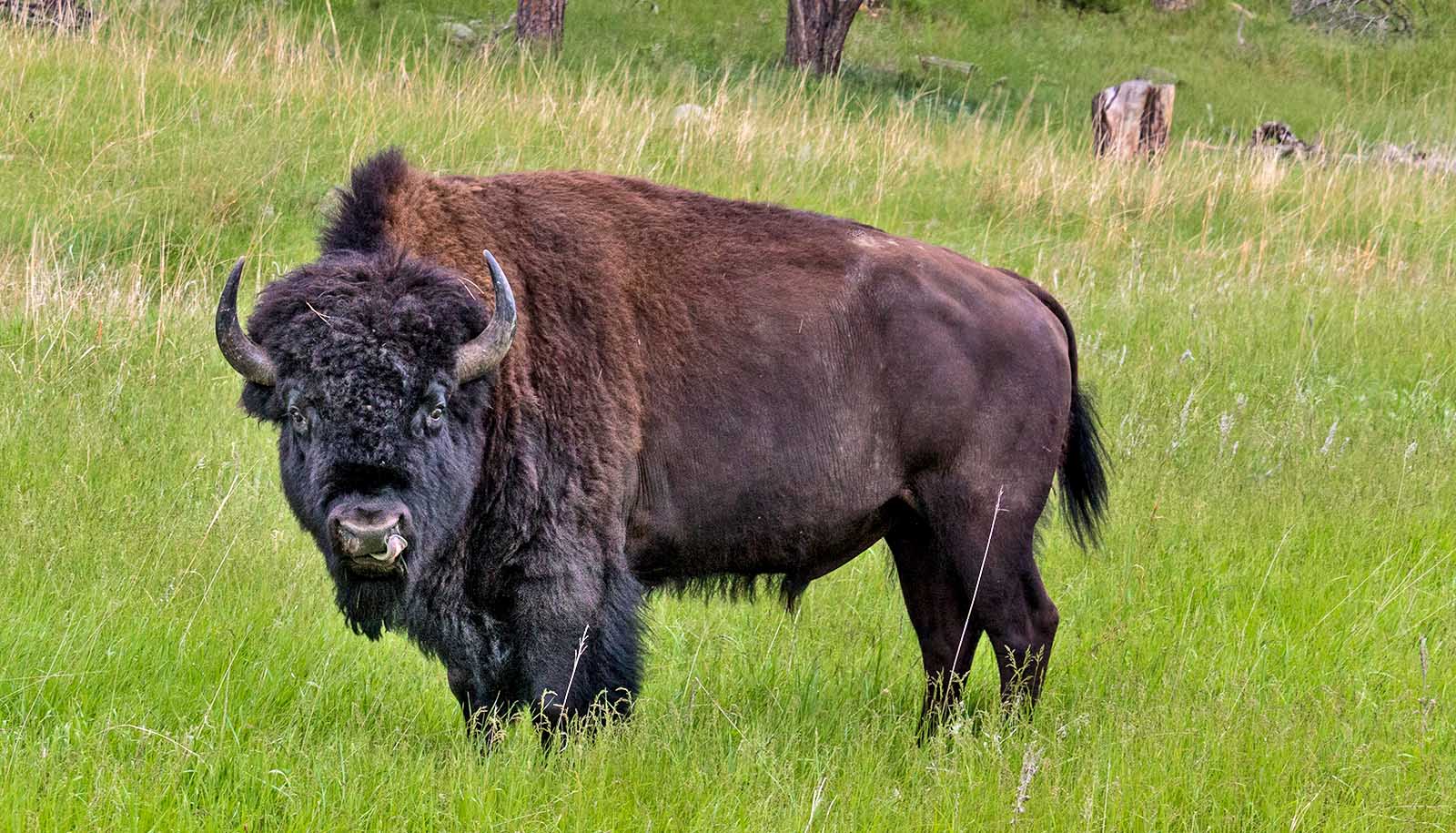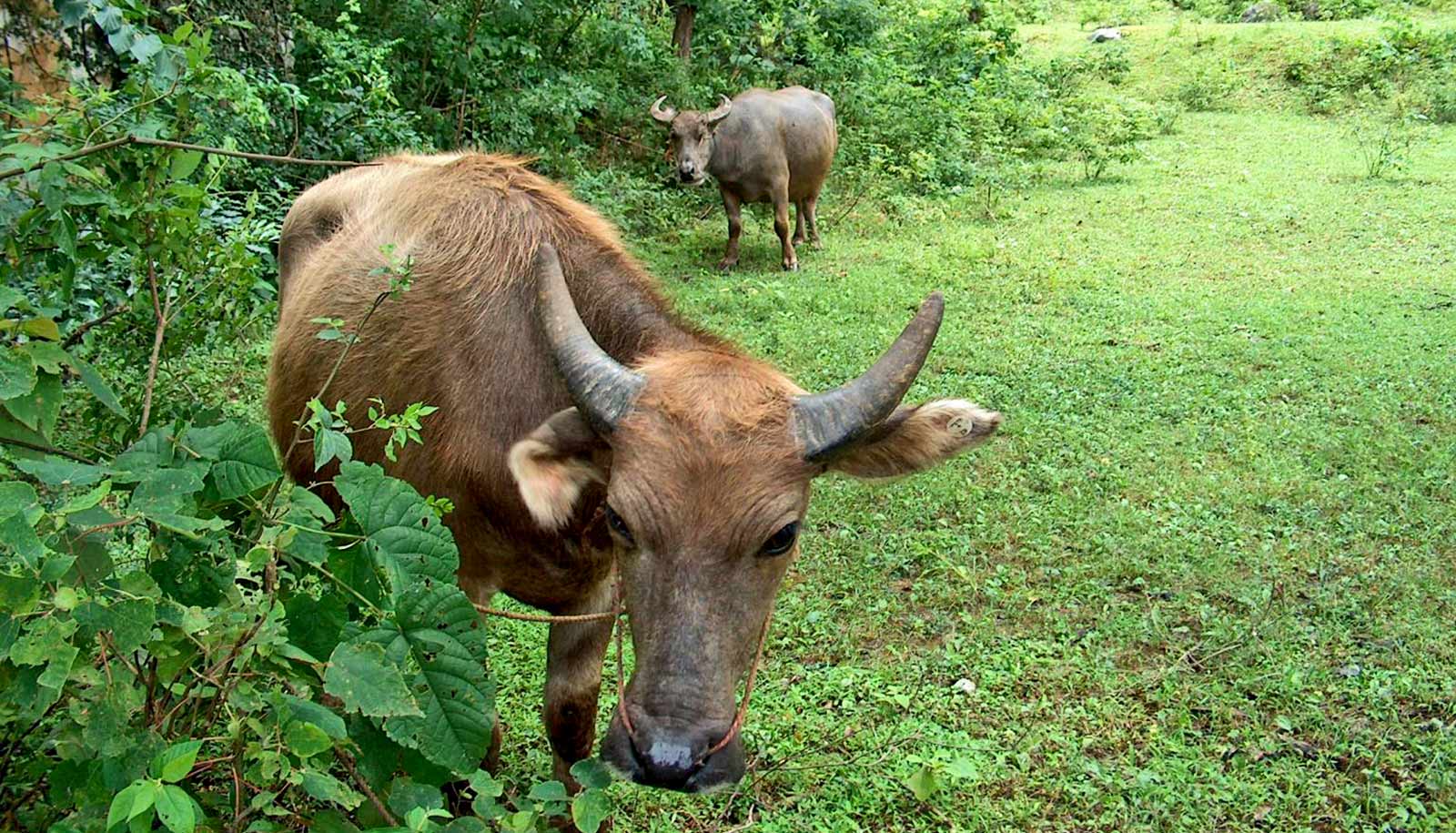Researchers report the oldest record by far of domestic yak, dating back 2,500 years.
The high-altitude hero of the Himalayas, yak are among the few large animals that can survive the extremely cold, harsh, and oxygen-poor conditions of the Tibetan Plateau. In the mountainous regions of Asia, yak and yak-cattle hybrids serve as vital sources of meat, milk, transportation, and fuel. However, little is known about their history: when or where yak were domesticated.
As reported in Science Advances, the researchers zeroed in on this date using ancient DNA from a single male yak that lived alongside domestic cattle and yak-cattle hybrids in a settlement known as Bangga, a community in the southern Tibetan Plateau located at an elevation of approximately 3,750 meters (12,300 feet) above sea level.
“Many scholars have speculated that yak was first domesticated in the high-altitude regions of the Tibetan Plateau,” says Xinyi Liu, an associate professor of archaeology at Washington University in St Louis. “It was a well-informed speculation, but up to this point, there hasn’t been robust evidence for that,” Liu says. “This is the first evidence supported by both archaeology and ancient DNA.”
Wild and domestic yak
Once widespread in the Tibetan Plateau, wild yak are now listed as “vulnerable” by the International Union for Conservation of Nature, with only an estimated 7,500 to 10,000 mature individuals left in the wild.
Domesticated yak, however, are prevalent across much of the world. An estimated 14 million to 15 million live in the highlands of Asia alone.
Scientists have previously traced the origins of other domestic bovine species found in Asia. This includes the taurine cattle found primarily in Europe and temperate areas of Asia; indicine cattle, or zebus, found primarily in India and tropical areas of Asia; and water buffalos in East and Southeast Asia. “Yak remains an open inquiry,” Liu says.
“Identifying domestic yak and yak-cattle hybrids at Bangga is not only essential to the understanding of the origin of this charismatic creature, the yak, but also informs us in general about animal domestication pathways, in which gene flow between related stocks is increasingly appreciated,” he says.
Bangga is one of the earliest agro-pastoral settlements in the southern Tibetan Plateau and the only site in the region with abundant animal remains to have been systematically excavated in recent decades. This work at Bangga, led by Hongliang Lu from Sichuan University, has provided scientists with a glimpse of daily lives at extremely high elevations between 3,000 and 2,000 years ago.
The excavations at Bangga also offer a rare opportunity to explore the history of early yak, cattle, and their hybrids. For this study, Liu and his fellow archaeologists paired up with livestock geneticists. The team used ancient DNA sequencing as well as zooarchaeological analysis and radiocarbon measurements to help answer questions that could not be resolved with field analysis alone.
Bones from Bangga
Starting with more than 10,000 pieces of mammal bones collected at Bangga, Zhengwei Zhang, a postdoctoral researcher at Sichuan University, identified and sorted out 193 specimens belonging to the genus Bos, a group that includes all domestic cattle, zebus, and yak, as well as their wild progenitors, aurochs.
The researchers then selected five well-preserved bones from these Bos samples to sequence for whole-genomic ancestry. The sequencing work was led by Ningbo Chen and Chuzhao Lei, two geneticists at Northwest A&F University who specialized in Bos domestication.
Genetic analysis revealed that only one of the ancient bones came from a yak, a male individual, while the other four bones were from female taurine cattle. Even figuring out that the cattle were taurine cattle was a surprise, Liu says, as Bangga is located close to the Himalayas and within the range of zebus and Indian aurochs, which were not found at Bangga. Instead, the cattle belonged to the taurine lineage that was introduced to the region from Anatolia via the silk route and northern Tibetan Plateau.
Additional analysis helped clarify that the bone from the male yak was truly a domestic variant, and not just a bone from a wild yak that hunters had killed and brought back to the settlement as food. The researchers also saw evidence for hybridization between the two species.
This new discovery of domesticated yak from 2,500 years ago fits into the larger story that is beginning to emerge about how humans adapted to living in a high-altitude environment on the Tibetan Plateau. For example, Liu and his colleagues have previously documented how people in this region grew barley as they faced a challenging environment.
“Bangga provided us with a unique window into lifeways at high elevations 3,000 to 2,000 years ago,” Liu says. “They cultivated barley in an intensive way, provisioned sheep with fodder and water, and consumed milk. All these resources were introduced to the Tibetan Plateau from other world regions as part of prehistoric food globalization and had become part of the Tibetan legacy. Now we know they had domestic yak.”
This discovery of the genetically confirmed evidence of domestic yak does not yet solve all questions about yak domestication, nor does it necessarily represent the very beginning of that domestication process. However, it hints at what motivated herders to bring yak home.
Early herders in this region were likely faced with harsh conditions, where animals died out quickly because of prolonged winters and severe snowstorms. One would need to be innovative to live in such conditions. A possible solution is intensive corralling, which would have allowed herders to provision their herds with agricultural by-products and water year-round. This strategy is attested by recent zooarchaeological and isotopic work led by Liu and Zhang.
The other solution would be to combine the environmental hardiness of yak with the productivity of cattle. “Dzomo (female hybrid) and dzo (male) are still the most common stocks in the Plateau even today for that reason. Cattle produce more milk and meat, but they are not as good at adapting to the high-altitude environment as yak,” Liu says. “Hybridization allows cattle to move high, and yak to move low at the same time they produce more milk.”
Study coauthor Fiona Marshall, professor emerita of Washington University, says the study draws attention to the genetic continuity among domestic yak and taurine cattle on the Tibetan Plateau. In many regions of the world, early domesticated animals were replaced by later varieties. The genomic data suggests such faunal turnover did not happen on the Tibetan Plateau.
“This suggests a successful and long-lasting legacy of early Tibetan communities who were cosmopolitan in subsistence strategies and resilient and innovative in facing a challenging climate,” Liu says. “Bangga provides the best example of such a community.”



